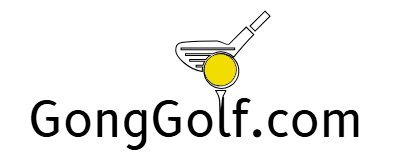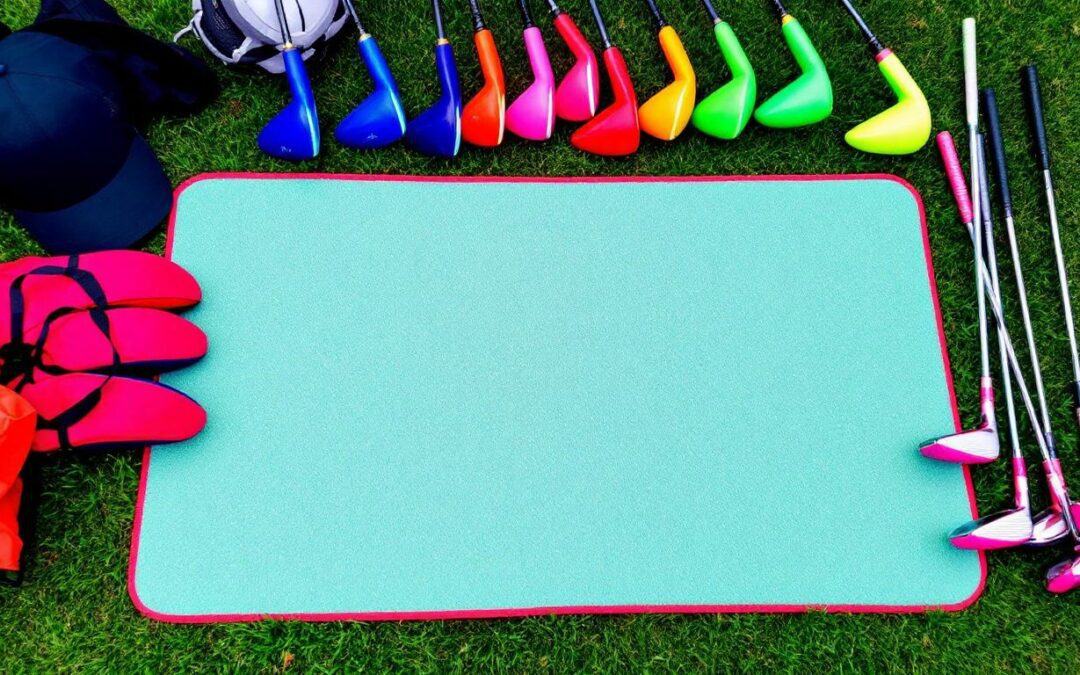Weak swings and tight muscles are the common problems faced by numerous golfers which in turn lead to limited performance on the golf course. Research has demonstrated that specific golf exercises for power are the most beneficial for increasing club head speed and flexibility thereby making the players to hit farther.
This writing is the explicit and practical guide of the golf-specific training moves to add to the strength and mobility of one’s body fast. Go on to find out some of the really easy methods for you to increase your energy in the golf swing.
Key Takeaways
- Doing squats regularly gives your legs and hips more power, helping you boost swing speed and drive distance.
- Throwing down medicine balls with a twist is a lot like swinging your driver, waking up quick muscle fibers that fuel your tee-off.
- PGA Coach Thor Parrish swears by side lunges paired with gentle twists to loosen up tight hips and amp up swing velocity.
- Deadlift exercises build up your core, glutes, and hamstrings, muscles you lean on heavily through every tee shot.
- Side-stepping with resistance bands loosens stiff hips—no more awkward turns or frustrating slices at the tee box.
Importance of Power and Flexibility in Golf

Power and flexibility are the twin turbo boosters behind a strong golf swing. Ever since Tiger Woods burst onto the scene, pros started hitting the gym harder, chasing bigger drives from the tee.
PGA Coach Thor Parrish nails it, explaining golfers need raw strength plus free-flowing movement to nail the right swing path. Strength workouts activate fast-twitch muscles, bumping up club head speed noticeably.
Targeted golf workouts for core strength and flexible hips let players crank up rotation torque. Bryson DeChambeau’s recent gains in yardage prove just how effective that combo can be.
A strong body with smooth, easy movement helps golfers swing faster without losing accuracy.
Key Golf Fitness Exercises
These golf fitness exercises build the right muscles for a stronger, faster swing. They focus on fast twitch muscle fibers and core stability that can add yards to your drives and help you play without pain.
Squats for Lower Body Strength
Squats are like jet fuel for golfers hoping to add some serious pop to their swing. This simple exercise packs strength and builds lower-body muscle, directly boosting your club head speed.
Golfers who squat regularly find they have better balance and control through the entire swing motion.
The squat is to golf what practice putting is to scoring – absolutely essential for those who want real results.
Here’s the science: squats fire up fast-twitch muscle fibers, which help create quick bursts of power exactly as you swing your club. Instead of piling on heavy plates, keep it simple—maintain good form, move fully up and down, and don’t cheat yourself out of results.
Twice a week is a solid schedule; it’ll build bone strength and muscles that fuel a stronger swing—your legs will thank you, and your golf buddies might secretly envy you.
Rotational Medicine Ball Slams
Rotational medicine ball slams can really amp up your golf swing, giving you that extra burst of power you’re after. Golf fitness expert Thor Parrish suggests doing about 4 to 6 reps per side, using a lighter or moderate medicine ball.
The beauty of this exercise is that it closely imitates your swing, twisting your body the same way you’d drive a golf ball down the fairway. It also fires up your fast-twitch muscle fibers, boosting club head speed—great news if you’re tired of shorter drives leaving you behind your buddies.
Building strength in these rotational movements translates straight into longer, more impressive distances off your tee shots.
Lateral Lunges with Rotational Reaches
Lateral lunges with rotational reaches pack a real punch for golfers chasing better speed and strength. Even PGA Coach Thor Parrish, the go-to guy for golfing excellence, swears by them.
They’re prime movers for building mobility, muscle control, and boosting swing speed. You get to fire up several muscle groups at once, giving you more zip in that swing. Toss them into your next gym session, and your swing just might thank you later.
Deadlifts step in next, bringing core stability into clear focus. Your swing stays solid, smooth, and balanced thanks to a sturdy center.
Deadlifts for Core Stability
Deadlifts might seem like something reserved for bodybuilders, but golfers can really benefit from them too. This exercise hits your hamstrings, glutes, and lower back muscles—exactly the ones you call on every time you swing.
It even helps you grip better, giving your club head extra zip down the fairway.
Strong core muscles come from regular deadlifts, making your swing smoother and steadier, like laying down a firm foundation before building a house. Think about Rory McIlroy or Brooks Koepka—those pros didn’t get explosive power just from luck.
If you’re new to deadlifting, start small. Use light weights at first, mastering the basics, before jumping to heavier lifts. Heavier lifts will push your fast twitch muscle fibers, the ones that help you swing faster, and send your ball sailing toward the green.
Banded Lateral Steps for Hip Mobility
Banded lateral steps are a golfer’s secret weapon for improved hip mobility and swing power. Pop a resistance band around your ankles, or slightly above the knees, and take side-to-side steps, keeping the band tight.
Simple as pie, yet powerful for getting those sleepy hip abductors and external rotators fired up. These hip muscles matter—a lot—for keeping your body steady through the swing.
Weak hips often lead to sloppy rotation, sliced shots, and drives as limp as wet noodles.
Smart golf training includes lateral movements like these, because your swing naturally involves shifting weight side-to-side. Golf coaches swear by this little move, suggesting two to three sets of about 10 to 12 steps each way, right before you head out to the course.
The best part is, you don’t need a fancy gym or high-tech gadgets. Even this humble banded shuffle can help you smash farther and swing smoother.
Tips for Incorporating Golf Fitness into Your Routine
Golfers benefit most by first building a stable foundation, then moving into heavier lifting. PGA trainers often recommend three workouts a week, mixing golf-centered drills and general fitness moves.
Getting strong at slower speeds helps the body take on greater loads safely. This method shields players from annoying injuries like tendinosis, which can put golfers out of action for weeks.
Going heavy isn’t always the smart play—form matters way more than weight totals. Resistance bands are a solid place to start if you’re newer to lifting, but still eager to boost swing speed.
Athletes activate fast-twitch muscles—key for explosive swing speed—best through combined strength and rotational drills. Thor Parrish, a well-known fitness expert highlighted by PGA.com/Coach, regularly shares exercises targeting core muscles, hips, and shoulders, which directly boost your swing power.
Conclusion
Golf fitness isn’t some passing fad—it’s your ticket to longer drives and smoother swings. Imagine smacking the ball further than ever, without even breaking a sweat—well, almost! Squats, rotational moves, and core exercises fire up those fast-twitch muscles you need to boost club head speed.
Grab a medicine ball or resistance bands, tackle those trouble spots head-on, and turn weaknesses into weapons on the course. Training smart, off the fairway and in the gym, puts power behind every swing you take.
Golf is more fun when drives soar farther and swings flow smoothly—no magic, just targeted exercise and sweat equity.
FAQs
1. What golf fitness exercises can increase my swing speed?
Grab resistance bands and practice twisting moves, this builds speedy muscles that rocket your swing. Pair strength moves with vertical jumps—it wakes up muscles you didn’t even know existed. Throwing around a medicine ball with rotation amps up explosive swing power, like lighting a fuse under your golf game.
2. How often should I do strength training for golf?
Aim for weights two or three times a week, focusing on moves specific to golf. Take plenty of downtime between workouts; your muscles build strength during rest days. Don’t push too hard—improving your swing isn’t worth limping around all week.
3. Are squats good for my golf game?
Squats are pure gold for powering your swing. They boost leg strength, helping you drive off the ground for extra distance. Begin with bodyweight squats first, then add dumbbells or barbells later to keep safe and injury-free.
4. What exercises improve golf flexibility?
Grab a swiss ball and practice moves that stretch and strengthen at the same time, enhancing your mobility. Or use suspension straps for gentle yet effective flexibility work. Do dynamic stretches before golfing, like leg swings or torso twists, far better than standing still holding a stretch.
5. Do I need a strength and conditioning coach for golf fitness?
Hiring a coach who understands golf fitness can spot tiny form mistakes you miss, speeding your progress dramatically. Still, plenty of golfers see big improvements from simple at-home workouts with bands and bodyweight exercises. If budget’s a concern, DIY sessions absolutely get results.
6. What’s better for golf – push ups or pull ups?
You need both! Push ups develop chest strength and arm control, perfect for precise shots. Pull ups build your back muscles, the powerhouse behind a smooth downswing. Mixing both movements into your routine means balanced strength, better control, and fewer facepalm moments on the course.

